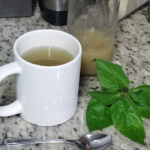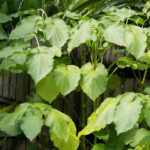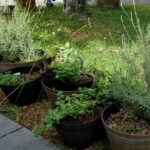Many of the Mediterranean herbs. favored in Italian and Greek dishes, really aren’t suited to our humid climate. They are more at home on dry, rocky slopes. I will have much more to say about this in other posts. For now, let it be enough to suggest that some of these herbs adapt to Florida better than others. Some varieties of rosemary, for example.
Rosemarys are generally divided into two broad groups: prostrate rosemary and erect rosemary. Within these groups you’ll find many cultivars.
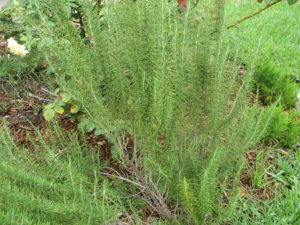
Barbecue Rosemary
Among the erect rosemarys, barbecue is a great choice for Florida. The plants have straight, stiff stems that make flavorful skewers when grilling kabobs. They seem to hold up pretty well in our high humidity, when provided with drier growing conditions. Plants can be grown in pots or in the ground, where they will reach four feet or taller. They thrive in full sun or bright shade.
Prostrate rosemary likes to ramble over rocks or stones.
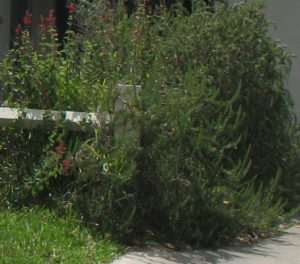
Prostrate Rosemary
While looking through my older photos, I found this monster prostrate rosemary that flourished for several years beneath my living room window. Unfortunately, the image resolution isn’t very good. It was probably taken with my first digital camera. The rosemary grew over a little fence, becoming completely unruly. I loved it! Even though prostrate, the plant grew to about four feet tall. The red flowers in the background are native salvia (Salvia coccinea).
Both the rosemary and salvia thrived on neglect.
Rosemary is one of my favorite herbs. Not only useful in the kitchen, but it adds delightful fragrance to holiday decorations. My sister and I always added some to our bay laurel wreathes. I don’t believe there is any such thing as too much rosemary in the landscape. In reworking our sloping back yard into shallow terraces, I have already planted several prostrate rosemarys into the highest/driest border.
